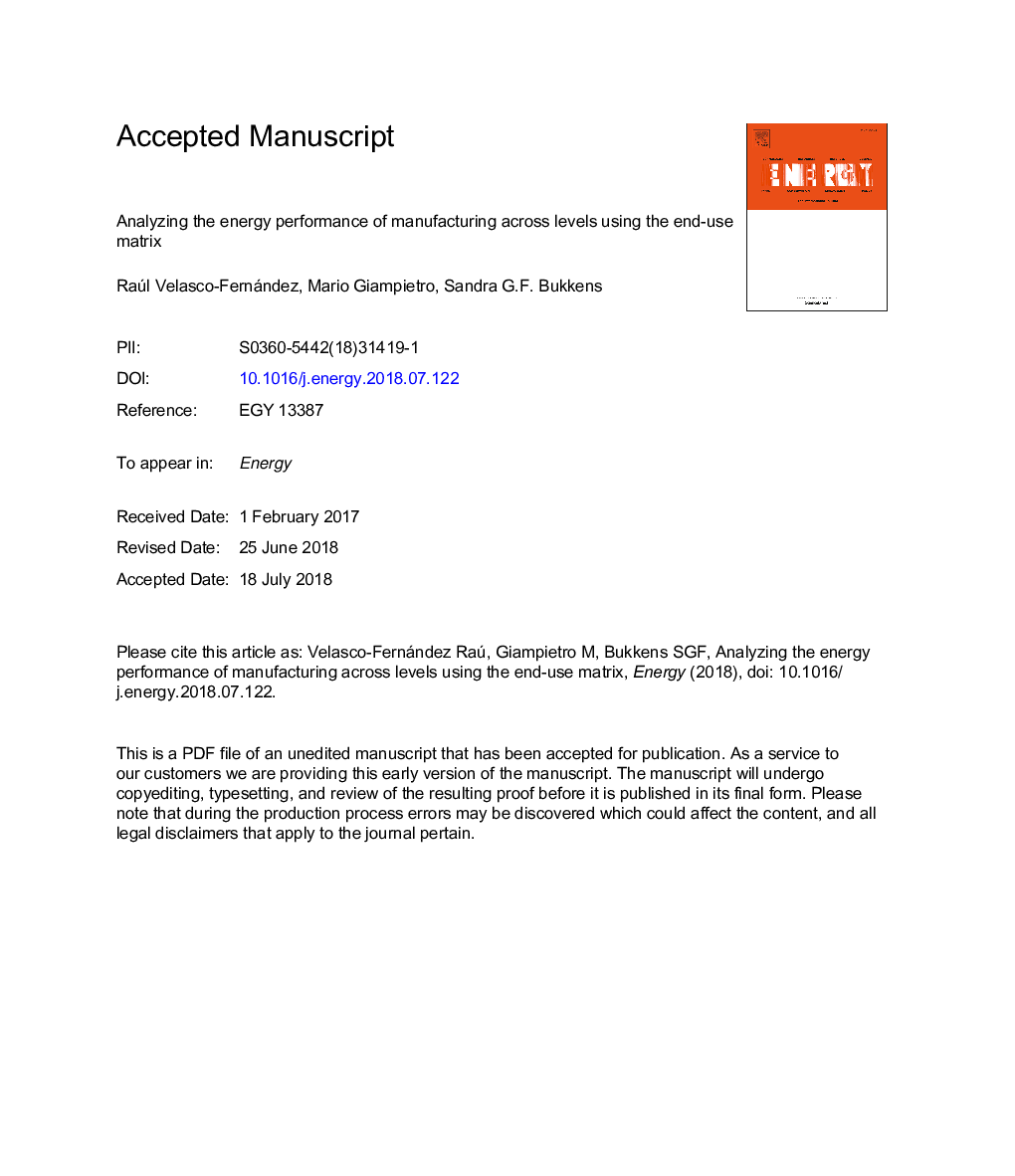| Article ID | Journal | Published Year | Pages | File Type |
|---|---|---|---|---|
| 8070872 | Energy | 2018 | 44 Pages |
Abstract
Within the context of the controversial use of the concept energy intensity to assess national energy performance, this paper proposes an innovative accounting framework: the energy end-use matrix. This tool integrates quantitative assessments of energy use of the various constituent compartments of socio-economic systems. More specifically it identifies, moving across levels of analysis, what compartments (or sub-compartments) are using what type of energy carriers for what type of end-use. This analysis is integrated with an assessment of labor requirements and the associated flows of value added. The end-use matrix thus integrates in a coherent way quantitative assessments across different dimensions and hierarchical scales and facilitates the development of integrated sets of indicators. In this way it contributes to a multi-criteria characterization of national or sectoral energy performance. The tool is illustrated with an analysis of three EU countries: Bulgaria, Finland and Spain. Challenges to improving the usefulness of biophysical analysis of the efficiency of the industrial sector are identified and discussed. Increasing the discriminatory power of quantitative analysis through better data standardization by statistical offices is the major challenge.
Related Topics
Physical Sciences and Engineering
Energy
Energy (General)
Authors
Raúl Velasco-Fernández, Mario Giampietro, Sandra G.F. Bukkens,
